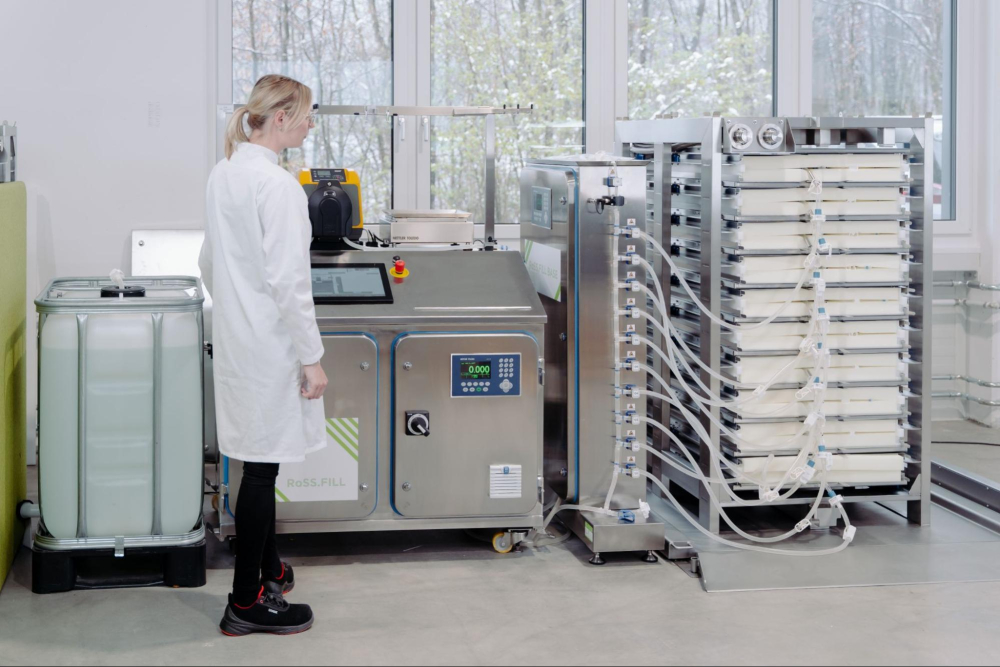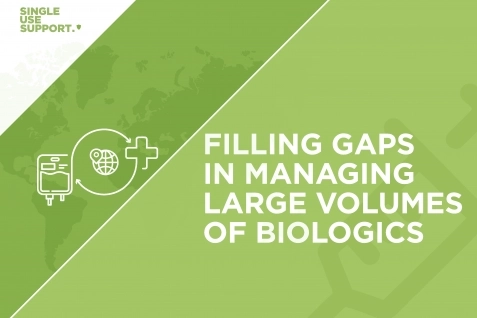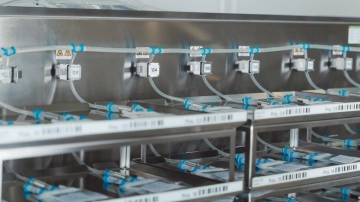7 trends in global vaccine development 2025
Table of contents
ShowFive years after the COVID pandemic, there are multi-faceted trends in global vaccine development that are promising for patients. Vaccine manufacturing and development have been key to improving human health and combating diseases such as polio, measles or mumps.
The following seven trends in global vaccine development are the most important to watch in 2025.
The relevance of vaccine development
For centuries, people have sought ways to protect themselves and others from harmful viruses or bacteria. The first attempts at immunization in the 18th century culminated in a true vaccine success story. Since then, the development of vaccines has been responsible for reducing, if not eliminating, diseases such as polio, tetanus and diphtheria.
While the benefits of vaccine production are undisputable, vaccine research and development are a challenging business to this day. Manufacturers of researched vaccines are faced with many challenges, such as supply chain issues, scale-up or quality control. COVID, along with the recent shortages in influenza vaccine, only highlighted those challenges and served as a reminder of how manufacturing issues can quickly and easily disrupt access to important medical treatments.
Developments on the global vaccine market
The development vaccines based on mRNA technology, marked a recent milestone in the global vaccine market. It highlighted the importance of novel methods in vaccine development as well as the need for collaboration in this field.
With a rising prevalence of infectious diseases, the global vaccine market – currently valued at USD 77.6 billion – is forecast to reach USD 93.8 billion until 2028. The same investigation has also come to the conclusion that high development costs are one of the biggest challenges the market is facing.1
There are a number of trends that can be observed, some of which are bound to alter the vaccine market in the long run. We are taking a look at the seven most important and promising ones.1

1. Big focus on mRNA vaccines
Even though messenger RNA (mRNA) was first developed as early as the 1960s3, mRNA vaccines were only brought to the market for the first time in response to the COVID-19 pandemic. There are several reasons for the delayed product launch, so to speak, one being technical challenges that could only be overcome by sophisticated innovations. Those innovations, in turn, required several decades of research.
When the world was faced with the COVID outbreak in 2020, mRNA technology was made ready to be used in vaccines – and it has proven to be both safe and efficient. This has led to a rise of mRNA vaccines, with numerous manufacturers developing new products to protect against a number of respiratory viruses, including influenza.
The numerous advantages of mRNA vaccines and the recent success during the COVID-19 pandemic has propelled progress and innovation in this field. Vaccine manufacturing companies are heavily investigating new fields of applications for mRNA vaccines in the attempt to re-shape the way immunity is achieved – such as Moderna currently working on vaccines for influenza, HSV, HIV, and others.2 3
2. Recombinant vaccines
Recombinant vaccines are developed using genetic engineering techniques. This involves the introduction of genetic material from a pathogen into another organism to produce a protein or antigen that can trigger an immune response in the vaccinated individual.
Apart from safety aspects, the ability to produce large quantities of antigens for vaccine development is among the main advantages offered by recombinant – including mRNA – vaccines. The versatility of recombinant DNA technology allows researchers to design vaccines for different pathogens, opening a broad field of application, including personalized or therapeutic vaccines.
The field of recombinant vaccines continues to evolve, with ongoing research focused on developing new vaccines for a wide range of diseases. Apart from cancer treatment, these include next-generation influenza vaccines or malaria, with the first vaccine having been approved in 2021.4 5 6
3. Role of AI to impact vaccine development
2025 could finally be the year that artificial intelligence (AI) is better used in vaccine development to make the process faster and more accurate. AI tools like machine learning are helping researchers in many aspects, such as analyzing complex genomic data to quickly identify vaccine targets or predicting immune responses. Antigen selection and epitope prediction, which used to take years, can now be done in months.
AI is also making mRNA vaccines better by making them more stable and easier to deliver, and by creating personalized vaccines that are a better fit for each person's immune system.
In clinical trials, AI helps pick the right participants and keeps an eye on the data in real time to make sure everything's safe and running smoothly. This could also give Pharma 4.0 another boost. Research institutions are working together to make these technologies better, which helps them respond quickly to new diseases. Even with challenges like data inconsistencies and regulatory barriers, AI is paving the way for faster, scalable vaccine solutions to global health threats.7 8

4. Viral vector vaccines
Viral vector vaccines – vaccines that make use of viral vectors as delivery vehicles – differ from most conventional vaccines in that they don’t actually contain antigens, but rather use the body’s own cells to produce them. They are manufactured using a modified virus to deliver a piece of genetic material from a pathogen, such as a virus or bacterium, into human cells. Once delivered, the host's system produces the encoded protein, triggering an immune response that leads to the production of antibodies and activation of immune cells.
In this way, viral vector vaccines aim to stimulate the immune system to recognize and mount a defense against the specific pathogen. This enables the body to respond more effectively if exposed to the actual infectious agent.
Having shown promising results in eliciting strong immune responses, viral vector vaccines and also non-viral vector vaccines are being explored for various infectious diseases and even some types of cancer. Challenges include pre-existing immunity to the viral vector and potential vector-associated side effects.
5. Personalized vaccines – tailor-made biologics
Personalized vaccines – also known as individualized or precision vaccines – are designed to elicit an immune response tailored to the specific characteristics of an individual's immune system or the unique features of their disease. This approach, which contrasts with traditional vaccines developed for broad populations, leads to high costs both in terms of development and manufacturing.
Even though they promise more effective and targeted immunization, their widespread adoption and implementation not only depends on being able to cut costs but also on overcoming various technical, regulatory, and logistical challenges. Providing a targeted and potentially less toxic approach to treating certain diseases, therapeutic vaccines represent a promising approach in the field of immunotherapy.
The field of personalized vaccines is dynamic – while currently research is most advanced in the context of cancer immunotherapy, ongoing developments include other areas of medicine. This is giving rise to vaccinomics, where one focus is on the development of personalized vaccines that are aimed at groups of people based on the same sex, genotype, and other factors rather than single individuals.9 10
6. More Biosimilars
Biosimilars are poised to be a major trend in 2025, with significant market growth and expanding applications. The global biosimilars market is projected to reach $40.36 billion in 2025, growing at a compound annual growth rate (CAGR) of 17.78% from 2025 to 2034.11
This rapid expansion is driven by factors such as the increasing prevalence of chronic diseases, rising demand for cost-effective treatments, and the expiration of patents on major biologics. The trend is further accelerated by regulatory support, such as the FDA's Biosimilar Action Plan, which aims to create a more competitive marketplace.
With the expiry of patents the next months and years biosimilar development and manufacturing will play a bigger role in the biopharmaceutical industry.12 13

7. Sustainability in vaccine development
Sustainable practices are being integrated throughout the development and manufacturing process, from using renewable energy sources to implementing green chemistry principles. Vaccine storage and transport packaging that is recyclable or reusable is an interesting approach for manufacturers to become more sustainable.
Advances in cold chain logistics, reducing the carbon footprint of vaccine storage and transport or the refurbishment of single-use systems are all efforts to ensure that vaccines remain effective while meeting global sustainability goals. By integrating green practices at every stage of production, the industry is creating a model that balances public health benefits with environmental responsibility.
Single-use technologies fostering progress in vaccine production
The multifaceted market of vaccinations calls for an equally multifaceted, versatile approach and the utilization of innovative equipment. Apart from being able to address different needs flexibly, manufacturers also need tools that allow them to respond to changing circumstances quickly and efficiently. Especially for larger pharmaceuticals, it is quite a challenge to scale-up manufacturing while maintaining the viability & functionality of their products.
This is why the role of single-use technologies becomes more important than ever: Their adoption has played an essential role in enhancing process flexibility and sustainability aspirations, while also helping to reduce costs and streamline manufacturing processes. Since they are able to cover the various stages in vaccine development, single-use solutions are ideally suited and thus playing an increasingly significant role in the biopharmaceutical industry.
To provide a process solution for fluid and cold chain management supports to overcome limitations in scalability and flexibility, yet ensuring maximum yield and product quality. Single Use Support has developed a vendor-agnostic, modular ecosystem of single-use technologies that is easy to implement and compatible with any setup.
Fluid management solutions for vaccine manufacturers include customized single-use manifolds and tubing assemblies such as IRIS, or the single-use filling and filtration system RoSS.FILL. Its capacity ranges up to several hundreds of liters at highest speed of operation. Single Use Support’s expertise in cold chain management of vaccines has funneled in RoSS.pFTU for controlled plate freezing & thawing and RoSS.ULTF, developed for ultra-low temperature storage of vaccines and other medical fluids. By allowing for scalability alongside the greatest possible flexibility, these platforms not only optimize cold chain and filling solutions but also the final medicinal product.
Read more: Improving vaccine manufacturing with single-use technologies

Download eBook
eBook on large-volume bioprocessing
This eBook gives you more insights about:
- What gaps need to be filled in bioprocessing?
- What primary packaging to use?
- Hurdles to overcome in handling pharmaceuticals
- The new approach to tackle these challenges
- Future Prospects: A glimple into the crystal ball
- Vaccines Market by Technology (Recombinant, Toxoid, Conjugate, RNA), Type (Monovalent, Multivalent), Disease (Pneumococcal, Influenza, DTP, HPV, MMR, COVID-19), Route of Administration (IM, SC, Oral), End user (Pediatric, Adult) & Region - Global Forecast, https://www.marketresearch.com/MarketsandMarkets-v3719/Vaccines-Technology-Recombinant-Toxoid-Conjugate-35525489/, Published 2023
- The Long History of mRNA Vaccines, https://publichealth.jhu.edu/2021/the-long-history-of-mrna-vaccines, Published 2021
- Research. Moderna Product Pipeline, https://www.modernatx.com/research/product-pipeline, Published
- Immunotherapeutic effects of recombinant colorectal cancer antigen produced in tomato fruits, http://dx.doi.org/10.1038/s41598-022-13839-1, Published 2022-06-13
- Recent advances in recombinant protein-based malaria vaccines, http://dx.doi.org/10.1016/j.vaccine.2015.09.093, Published 2015-10-21
- Malaria vaccines: the 60-year journey of hope and final success—lessons learned and future prospects, http://dx.doi.org/10.1186/s41182-023-00516-w, Published 2023-05-17
- Leveraging artificial intelligence in vaccine development: A narrative review, http://dx.doi.org/10.1016/j.mimet.2024.106998, Published 2024-07-15
- Leveraging artificial intelligence in vaccine development: A narrative review., Published 2024 Sep
- What is vaccinomics?, https://www.phgfoundation.org/explainer/vaccinomics, Published 2021
- Insight into Personalized Vaccines, https://www.news-medical.net/health/Insight-into-Personalized-Vaccines.aspx, Published 2022
- Biosimilars Market Size, Share, and Trends 2025 to 2034, https://www.precedenceresearch.com/biosimilars-market, Published 2025
- Upstream intensification from lab to mAb manufacturing, https://www.susupport.com/knowledge/manufacturing-processes/bioprocessing/upstream-process-intensification-mab, Published 2025
- Biosimilars Market - Forecast(2025 - 2031), https://www.industryarc.com/Report/10593/biosimilars-market.html, Published 2025









